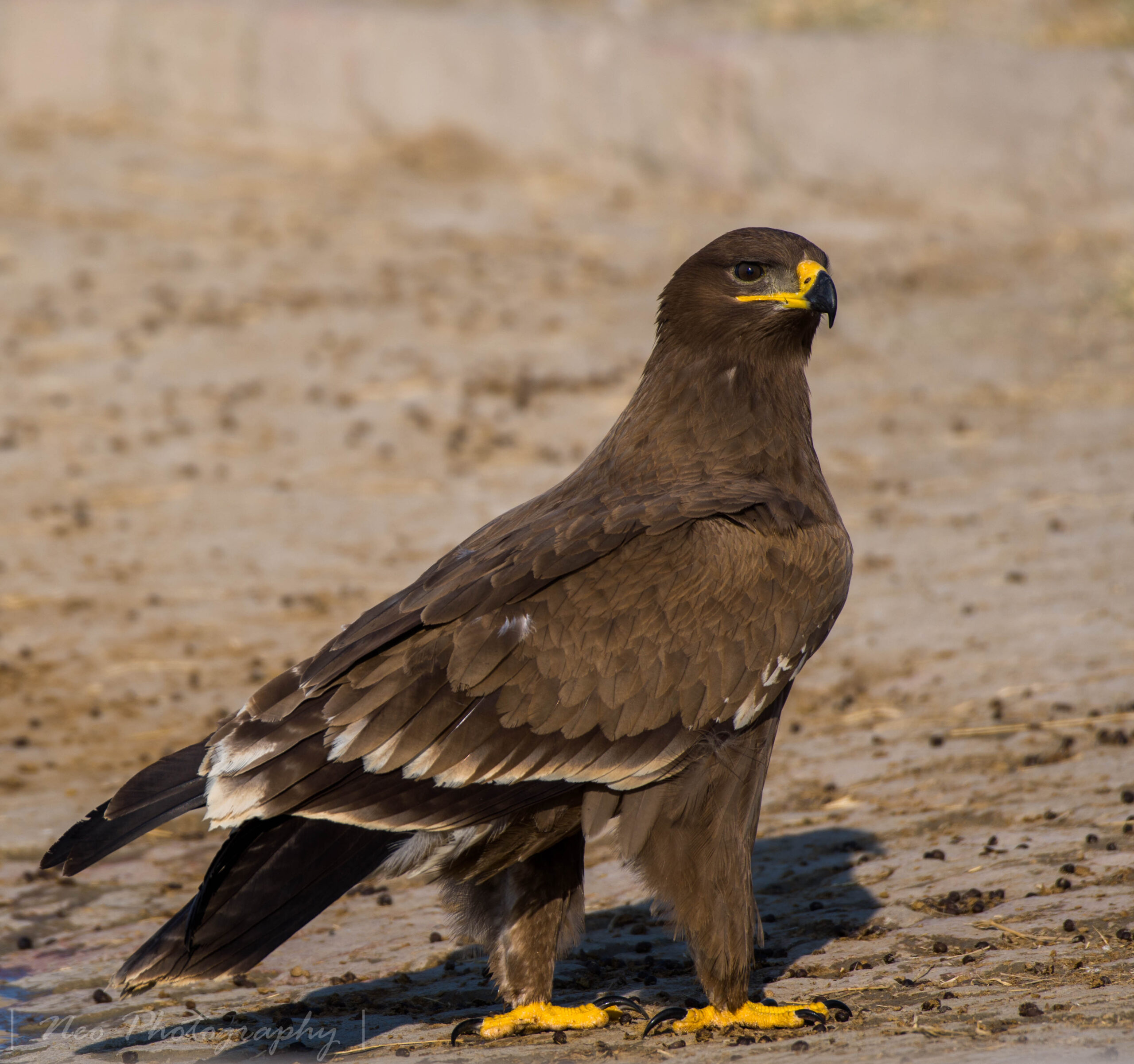Steppe Eagle, migratory to India, was observed maximum during winter. It was usually found occupying electric poles along the road to Jaisalmer whether move from Bikaner or from Jodhpur.
Tawny Eagle and Short-toed Snake Eagle, which breed in Thar Desert, were common to come across, flying or occupying a tree top. Greater Spotted Eagle was an uncommon feature during winter in those areas. So was Eastern Imperial Eagle.
Eagles gone: Booted Eagle would reach from the Himalayan heights to this arid countryside during winter. Bonelli’s Eagle, resident to Indi,a was an uncommon visitor during same season in the desert.
Long-legged Buzzard was a fairy common sight during winter, reaching from the Himalayan region annually. White-eyed Buzzard being resident was observed occasionally.
Common Kestrel was always an interesting sight, hovering in air and eyeing at a rodent below on ground, during winter.
Falcons missing: Three falcons dominated the Thar scene during winter: Laggar, as resident, observed squatting over a tree top, Peregrine, likewise, was a fascinating sight while Barbary was a rare sight; Barbary is a cousin of Peregrine described as Falco peregrinus pelegrinoides.
Merlin used to be a great delight across arid grassland habitats searching for a rat or gird, only during winter.
Black-winged Kite was ubiquitous hovering like a helicopter not far above ground and to swoop vertically over a prey. Black Kite was in numbers, a common resident species.
The Desert has numerous small or tiny water bodies maintained by villagers to let their livestock survive better. Osprey would often be sighted around.
Feed is lost: Gone are those days, alas!
This writer I visited the Thar Desert during late February 2024 and was aghast to see the disappearance of all these raptors from that landscape. Driving from Jodhpur to Phalodi, Pokaran and finally to Lathi, I observed only two Eagles soaring. None other was available in my luck. The most common to come across, Steppe Eagle was totally missed. We photographed a Long-legged Buzzard standing over an electric pole.
What wrong happened there? Green crops fluttered on either side of the road I travelled about 290 km during the day. Tube wells were gushing out underground water to irrigate crops. Vast swathes of semi arid and arid land have been converted in to productive parcels of commercial crops. To do so, people had to decimate rats, rodents, gerbils, desert girds, etc., which are staple diet of raptors.
Rodents gone, raptors gone!
Question-mark: Sad for the Thar Ecosystem. All wild species are inseparable part of this landscape. The landscape used to be thriving with raptors until end of last century. We sported species after species and totaled about a hundred within days claiming the Desert was most ideal place to live with.
Is lack of such birds of prey not a negative signal for sustenance of life in the Thar? Who to answer? The Forest Department has twin roles there: plantation undertaken by its territorial wing, and wildlife protection by its another wind. Both usually remain at logger heads.
During this visit, I found six Indian Gazelles were poached near Ramdeora, crime was suspected to be committed by the Bhil community. Officials took a few days to take cognizance and the alleged poachers were not easy to be arrested. Post mortem was yet to be done on second day as we ascertained more details.
Angelic source: Come to me place and I will show you Vultures! Wiry and slim, Radheyshyam Pemani Vishnoi beckons us along the black-top road to Lathi village. With a suspectful mind we follow him. A lone room at corner of his organic farm provided much needed shade. He took us in his high-gear vehicle about 200 meters behind and switched off. Lo! A group of Vultures was indeed basking in the sun.
What are they doing there as there appears no feed for them? They take bath at the circular water body he created at an expenditure of about Rs 40,000 (USD 500). Even Great Indian Bustard, critically endangered, troops in during small hours of morning to have a comfortable drink before foraging across the vast grass field for feeding.
Himalayan Vulture was noticeable owing to its grey feathers. Griffon from Europe was by side of its shoulder. Cinereous Vulture, coming from Mongolia, was having a wink nearby. Radhey informs – wait, Red-headed Vulture, Egyptian Vulture and White-rumped Vulture would also land there.
Carrion comfort: He drives us to a sacred grove where some thousand cows are maintained and milk sent to city of Jaisalmer daily. Some die and are left aside. That attracts a number of Vultures and at times Eagles too. Egrets, Crows and Red-naped Ibis were found having gala feast, without having labored.
Local villagers have least concern about what we do: wildlife conservation. Own business, mostly agriculture and operating vehicles, keeps them going. Radheyshyam appeared like a bird of good omen, showing many avian species and also Spiny-tailed Lizards, one at a distance of about 10 feet, a few hundred west of Chacha village!
Sun dips down over sand dunes. Unison call of Demoiselle Cranes pours in to our ears. We observe a fast moving dark cloud over sky to land at a safe place to roost. We drive hurriedly for own roost.
Growth rate: Life has not been comfortable on return at work place in Jaipur: whom to report over colossal loss of wild species across the Thar Desert? Even if one of us shall report, what finally would result in? India is developing at the fastest growth rate, we read in newspaper.
By
Harsh Vardhan
Harsh Vardhan is based in India and in to wildlife conservation and enjoys citizen centric advocacy.
